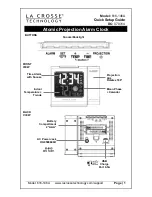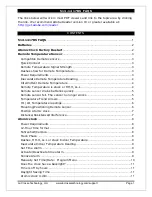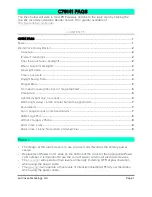
VESDA VLI Product Guide
VESDA by Xtralis
32
www.xtralis.com
Each air inlet port allows maximum insertion of the sampling pipe to a depth of 15 mm. (0.60 in). This prevents
the sampling pipes from damaging the flow sensors. While connecting the detector to the pipe network:
l
Ensure a minimum length of 500mm (20in) of straight pipe before terminating the pipes at the air inlet ports
of the detector.
l
Square off and de-burr the end of the sampling air pipes, ensuring the pipes are free from debris.
l
Determine the Air Inlet Ports to be used. Refer to Table 4-1 below for details.
l
Remove the plugs from only those Air Inlet Ports intended for use.
l
Insert the pipes into the pipe inlet(s) ensuring a firm fit.
Note:
DO NOT glue the inlet pipes to the pipe inlet manifold.
When configuring the detector ensure that the correct pipes in use are selected:
Table 4-1: Preferred use of pipe inlet ports
No. of Pipes
Preferred Pipe Inlet Port to use
Pipe 1
Pipe 2
Pipe 3
Pipe 4
1
Inlet 2 or 3
Inlet 2 or 3
2
3
Inlet 1 or 4
Inlet 1 or 4
4
1
2
3
4
Figure 4-1: Pipe inlet port numbering
For code-specific information, refer to Codes and Standards Information for Air Sampling Smoke Detection on
page iii.
4.4
Managing the Exhaust Air
Air is expelled from the detector via the exhaust port at the bottom of the unit enclosure.
The air exhaust port is tapered to accomodate standard pipes of OD 25 mm (ID 21 mm) or IPS ¾ inch and to
provide an airtight seal. Remove the exhaust port plug and if required, connect an outlet pipe to the exhaust
manifold. DO NOT glue this pipe to the exhaust manifold as this will void the warranty.
Where the detector is located outside the protected environment, it may be necessary to return the exhaust air
to the same environment. For example, where pressure differences exceed 50 Pa, or where hazardous
substances are present inside the protected environmenet. Return air pipes need to be as short as possible to
minimize the effect of airflow impedance in the return air pipe network.
















































